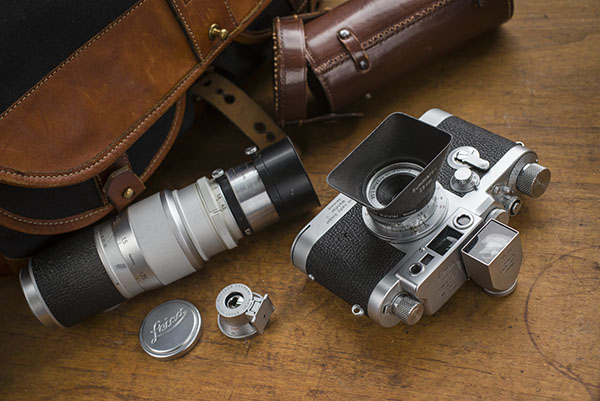
Only this morning I was in Red Dot Cameras—one of their two open Saturdays of the month—to meet George James who had trekked from his home in Hampshire. We were browsing the extensive selection of used Leicas of all ages. There were serried ranks of II and III models ranging from the early 1930s through to the early fifties. I had my eye on a IIIg, the pinnacle of screw-mount Leica design. Elaine Cooper produced the key to the cabinet so I grabbed a few minutes with one of the three examples on view It’s a camera I don’t have in my collection and my eye tends to stray IIIg-wards every time I see Red Dot’s display. There’s just something very attractive about it.
It is easy to assume that the classic screw-mount cameras were suddenly superseded by the undeniable talents of the M3 in 1954. The M3, for the first time, incorporated a viewfinder that combined both view and focus. It sounds obvious now. But, before the M3, all Leicas had had two separate small windows, one for focus and one for composition. In retrospect, the M system was so far in advance of the old screw mount that there seems no compeition. It would, however, be wrong to write off the screw mount. The IIIg was introduced in 1957, after the arrival of the M and it was successful.
In comparison with its predecessor, the IIIf, the g had a massive viewfinder window, almost as big as that in the M3. It was a radical departure from the IIIf and it remains one of the most handsome and typical Leicas. Still, however, it had two side-by-side windows, with a traditional small viewer for focusing. The IIIg was cheaper than the flagship M3 and proved popular with photographers who had grown up with the two-window system and were reluctant to change to the new all-in-one Meßsucher. Leica offered an adaptor to convert older screw-mount lenses, which were in a majority, to the bayonet M mount. It’s a one-way street, though: There is no way of adapting an M lens to screw-mount.
The IIIg was therefore something of an oddity and it struggled on until 1960 when Leica decided that all future cameras would follow the lead of the M3 with its newfangled bayonet mount. Among screw-mount cameras, though, the IIIg is somewhat rare and very desirable. The bodies on display at Red Dot were priced between £499 and £599, a price that would buy a decent M3 body of a similar age. Tellingly, these prices are upwards of four times the original price of the camera (not taking into account inflation which paints very different picture).
Later, when I returned to base I found that Tom Grill has been writing about his lovely 1957 IIIg. This did nothing to dampen my illicit thoughts of acquiring a IIIg. Tom’s blog is notable for his wonderful product shots but also for his sensible and expert evaluation of camera equipment and techniques. He sums up the IIIg thus:
Handling a IIIg is a thrill akin to driving an old, finely-tuned sports car. You know you have something substantial in your hands. You can literally feel the precision of Leica design and build quality. With a Leicavit accessory attached and larger viewfinder the camera is quite fast in use — the only major drawback being the separation of veiwfinder and rangefinder windows.
